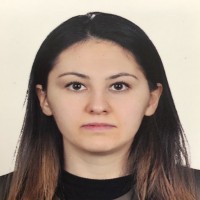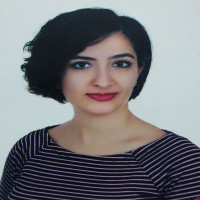RESEARCH ARTICLES
SYSTEMATİC REVİEWS and META-ANALYSİS
Systematic Reviews and Meta Analysis
18. Level of Anger in Adolescents with Chronic Diseases and Associated Factors: Systematic ReviewSystematic Reviews and Meta Analysis
19. Sağlık Hizmetlerinde Süreç Madenciliği Hakkında Bibliyometrik AnalizREVIEW ARTICLE
CASE REPORT
CORRECTION/ERRATUM ARTICLE
Issue Reviewers


 0000-0002-3092-8841
0000-0002-3092-8841
 0000-0002-6326-2177
0000-0002-6326-2177


 0000-0003-4794-516X
0000-0003-4794-516X





 0000-0002-4770-385X
0000-0002-4770-385X
 0000-0001-5335-103X
0000-0001-5335-103X



 0000-0002-1019-852X
0000-0002-1019-852X


 0000-0002-0150-6930
0000-0002-0150-6930

 0000-0001-8954-6314
0000-0001-8954-6314


 0000-0001-6478-4236
0000-0001-6478-4236


Aim & Scope
The Bandırma Onyedi Eylül University Journal of Health Sciences and Research which is the scientific publication of the Faculty of Health Sciences of Bandırma University, aims to contributes to the knowledge of health sciences by publishing original research, meta analysis, systematic review to the editor related to the fields of nursing, nutrition and dietetics, physiotherapy and rehabilitation, child development, midwifery, gerontology, health management, social work.
The Bandırma Onyedi Eylül University Journal of Health Sciences and Research is a multidisciplinary, peer-reviewed, periodical and open access journal published in electronic environment three times a year (as of 2020) (April - August - December) by Bandırma Onyedi Eylül University Faculty of Health Sciences.
Manuscripts submitted to our journal for evaluation should not be published, accepted for publication, or should not be under evaluation process for publication. The responsibility of the published and under-reviewed works belongs to the author (s). The copyrights of the published works belong to the Bandırma Onyedi Eylül University Journal of Health Sciences and Research.
The studies to be published should be prepared and submit in accordance with the conditions specified in the journal writing rules and publication principles.The papers submitted to the journal are primarily examined in terms of form and content. Works that are appropriate in form and content are submitted by the editor to the editorial board. The works approved by the editorial board are subject to evaluation by at least two referees. The evaluation process takes 4 to 8 weeks on average.
Author Guidelines
AUTHOR GUIDELINES
BANDIRMA ONYEDI EYLUL UNIVERSITY JOURNAL OF HEALTH SCIENCE AND RESEARCH PUBLICATION PRINCIPLES
1. Manuscripts submitted to Bandırma Onyedi Eylül University Journal of Health Sciences and Research should not have been published anywhere before and should not have been submitted for publication.
2. Articles written in either Turkish or English languages are published in the journal. The scientific and linguistic responsibility of the studies published in the journal belongs to the author(s).
3. In our journal, not only studies from academicians, but also studies from researchers and practitioners will be evaluated.
4. Studies that have been presented at conferences and have not been published in full text, but only published abstracts, can be accepted into the publication evaluation process, to be specified in the study.
5. Articles should be sent to our journal electronically. It is necessary to be a member and log in to the Journal in order to send the articles online through the website and to track the stage of the article in the referee evaluation process. Personal information entered on the journal's website will only be used for the stated purposes of the journal and will not be accessible for any other purpose or to any party.
6. The authors are informed about the referee process of the articles sent to Bandırma Onyedi Eylül University Journal of Health Sciences and Research, and the evaluation reports can be easily followed by the authors through the system.
7. When applying, an article file without author information will be uploaded to the system. Author information will be uploaded as a separate file as “Title File”. The credential file must also contain ORCID numbers. Downloads will be in word format. Submissions that are not made in accordance with the journal rules are not included in the evaluation process.
8. The journal is based on the principle that the referee does not know the author (blind refereeing). In the articles to be sent to the referee, the confidentiality of the information regarding the identity of the author is ensured. In the studies coming from our university during the referee assignment process, no referee is appointed from within our university. In studies coming from outside of our university, at most one referee is appointed from within our university, if needed.
9. The author(s) who submit an article to Bandırma Onyedi Eylül University Journal of Health Sciences and Research are deemed to have accepted the aforementioned referee evaluation conditions and process of the Journal.
10. Manuscripts that do not comply with the journal's subject, spelling or grammar rules are returned to the author/s without being sent to the referees by Bandırma Onyedi Eylül University Journal of Health Sciences and Research after preliminary examination. All kinds of form and content changes may be requested from the authors regarding the pre-evaluated manuscripts.
11. During the layout work, the author(s) must reply to the submissions made for checking and correction purposes, within the specified timeframes. The articles of the author(s) who do not respond within the specified times are postponed to be evaluated in the next issue.
12. The articles whose evaluation process is completed are listed as of the date of submission and published in the relevant issue of the journal. For articles accepted for publication, a letter of acceptance is sent to the author(s) upon request.
13. In addition to original research, translations are also published from time to time in Bandırma Onyedi Eylül University Journal of Health Sciences and Research. A copy showing where the translation was published should be sent to the journal as an annex to the article, with the approval of the author(s) and the journal in which the first publication was made.
14. In line with the reports from the referees, it is decided to publish the article, to request correction, additional information and abbreviation from the author/s within the framework of the report, or not to publish this decision, and this decision is notified to the author/s via the system. The author(s) completes the changes requested by the referees and notifies the journal editor.
15. Authors, if the article is accepted for publication by Bandırma Onyedi Eylül University Journal of Health Sciences and Research, they agree to its release under the Creative Commons Attribution-NonCommercial 4.0 International License (CC BY-NC), which permits third parties to share and adapt the material for non-commercial purposes only, with appropriate attribution to the original work.
16. At the beginning of the evaluation system, the journal's Copyright Transfer Form signed by the authors is requested to be uploaded to the system for all articles.
17. The opinions and responsibility in the articles published in the journal belong to the author(s).
18. If the article or article that is the subject of the research is supported by any institution or produced from the thesis, this should be stated in the submitted article.
19. The submitted article should be passed through the plagiarism program (www.ithenticate.com) and the plagiarism report should be uploaded to the system. Plagiarism must be below 20%.
20. Articles in the pre-evaluation phase can be withdrawn by their author(s).Articles in the peer-review phase, delays in the evaluation process of the submitted manuscript, etc. Authors who want to withdraw the manuscript and have it published elsewhere due to reasons such as: With the approval of this application by the journal editorial board, they can withdraw their articles from the journal. However, once the referee process has started, the article cannot be withdrawn or sent to another journal.
21. Article Rejection; Manuscripts that are not accepted for publication are sent back with justification. Maximum 15 days for the articles that are requested to be corrected during the pre-control phase; A maximum of 30 days is given for the articles for which corrections are requested after the evaluation, if these periods are exceeded, the article is rejected.
Ethical Responsibility
Bandırma Onyedi Eylül University Journal of Health Sciences and Research considers the recommendations of the International Committee of Medical Journal Editors (ICMJE) and the Committee on Publication Ethics (COPE) International Standards for Editors and Authors to evaluate the compliance of submitted scientific articles with research and publication ethics. Compliance with national and international ethical guidelines and permission from the relevant ethical committees are essential in research conducted in humans or animals, and the compliance of the articles with ethical rules is the responsibility of the authors. In studies conducted on humans, the Journal adheres to the principles set forth in the "Helsinki Declaration", "Good Clinical Practices Guide" and "Good Laboratory Practices Guide" and T.C. It accepts the principle of compliance with the relevant regulations of the Ministry of Health. In the MATERIALS and METHODS section of the article, the authors must state that they have received the "Informed voluntary consent" document signed by the relevant ethics committee and the people who participated in the study. If the ethics committee document is required, the ethics committee document should be scanned and uploaded to the system while the article is uploaded to the system. Methods” section and should also be included on the first/last page of the article. In case reports, information regarding the receipt of the informed consent/consent form should be included in the article.
Research that requires ethics committee approval;
1. All kinds of research conducted with qualitative or quantitative approaches that require data collection from the participants by using survey, interview, focus group work, observation, experiment, interview techniques,
Use of humans and animals (including material/data) for experimental or other scientific purposes, Clinical studies in humans,
2. Animal studies,
3. Retrospective studies in accordance with the personal data protection law
Bandirma Onyedi Eylul University Journal of Health Science and Research Author Guidelines
Font and Page Layout
1. In the articles sent to the journal, the articles should be prepared using 11 font sizes, Times New Roman font and Turkish font. Each paragraph spacing (6 pt after) should be left blank. The entire article should be justified, and the heading and paragraph entries should be left-justified.
Preparation of the Article
Articles are prepared according to APA spelling rules. Review articles should not exceed 15 pages and research articles should not exceed 20 pages (except for abstracts, tables, figures/graphics, and references). The number of tables, graphics, and figures in the submitted articles should not exceed 5 in total. In addition, the articles should be sent as two Microsoft Word files named as title and main text file. These files are:
A. Title page
The full title and short title of the article should be given in Turkish and English in the title file. The short title should not exceed six words.
In addition, ORCID registration numbers of all authors (https://orcid.org/), type of article (original research, case report, review, etc.), names of researchers (Only first and last name should be capitalized), institutions and departments where they work, academic degrees, contact (currently using work phone, e-mail; also the corresponding author's mobile phone) information should be included. The address of the organization where the authors work should be shown under the names of the authors in its shortest form. In the submitted article title file, Presentation at the Congress or Symposium, Production Status from the Thesis Study, Acknowledgments (if any), Ethical Aspect of the Research (Ethics committee approval for this study has been received from the Ethics Committee of ............. Date:......and Issue No:.....)), Author Contribution, Statement of Conflict of Interest, Statement of Financial Support should be indicated.
The title of the Author Contribution should include the sub-titles of “Idea/Concept”, “Design”, “Audit/Consultancy”, “Analysis and/or Interpretation”, “Source Review”, “Writing the Article”, “Critical Review”. For each sub-title, which author(s) contributed should be indicated with only the initials (capital) of the first and last names.
B. Main text file
The full text file should not contain information about the names of the authors.
Article Text
3. Font Types
The types of articles to be sent to the journals for publication should be in the following categories and should be prepared in the specified structures.
Research Article: The main text should include Turkish and English Abstract, Introduction, Materials and Methods, Results, Discussion, Conclusion, and References. In the Material and Method section, the type (design) of the research, the research universe and sample, the data collection tools, the ethical aspect of the research and the evaluation of the data should be included.
Systematic Review: It is within the scope of the research article. In order for a review article to be defined systematically, the processes to be included in the review should be determined, selected, and the processes of synthesizing the study data should be followed. Systematic review studies to be sent to Bandırma Onyedi Eylül University Journal of Health Sciences and Research should also be prepared with similar titles to research articles and uploaded to the system.
In systematic reviews and meta-analysis studies submitted to the journal, the author(s) should use standard checklists showing that they comply with the PRISMA (Preferred Reporting Items for Systematic reviews and Meta-Analyses) statement (http://www.prisma-statement.org/) must be presentable.
Systematic Review / Meta-analysis should consist of an introduction, method, findings, discussion and references. In the introduction, the rationale/purpose of the systematic review should be explained in line with the literature and the goal/research question of the study should be stated using the PICOS (participants, interventions, comparisons, results, and study design) framework. In the method section of the systematic review; Subheadings of Research Design, Inclusion Criteria, Exclusion Criteria, Research Population and Sample, Data Evaluation should be included.
Review Article: It should be prepared directly or by invited authors, including up-to-date resources for all health science topics. The main text should include Turkish and English Abstract, Introduction, Subtitles Related to the Subject, Conclusion and References.
Case report: It should briefly describe the case. It should include Introduction, Case Report, Discussion, Conclusion and References sub-titles.
4. Articles should be based on the Turkish Language Association's (TDK) spelling guide and spelling rules. Instead of foreign words, Turkish dictionaries should be used as much as possible. When using unconventional words in Turkish, the foreign language equivalent can be given in parentheses at the first occurrence.
Title:
5. Turkish and English titles should be written above the Turkish and English abstracts in capital letters, centered, 1.5 line spacing, Times New Roman, 11 font size and bold.
Summary and Keywords
6. All submitted articles must include Turkish and English abstracts. Abstracts of research articles; It should include Aim, Material and Method, Results and Conclusion sections and Keywords. The English Abstract should consist of “Aim, Material and Method, Results, Conclusion” sections.
Turkish and English abstracts should be written in italics. Abbreviations should not be used in the abstract/abstract part of the article and this part should not exceed 200 words.
Key words should be selected according to Turkish Science Terms (TBT) or Medical Subject Headings (MeSH). The first letter of the keywords should be capitalized, separated from each other by a comma (,) and written justified to the left.
Summaries of Systematic Reviews should include: Introduction, Method, Results, Discussion, Conclusion and Keywords.
Abstracts of Review Articles; It should fully reflect the content in a way that means Introduction, Aim, Development and Conclusion.
Case Report summaries; should briefly describe the phenomenon. It should be written with Introduction, Case Report, Discussion and Conclusion.
7. Abstracts and Keywords should be written in Times New Roman, 11 font size, italic. Only the titles of these sections should be bold.
Main Text and Chapter Titles
8. The main text should be written using Times New Roman font, 11 points and justified. The first lines of paragraphs should start 1 cm inside. In the article, only the main headings should be written in capital letters, and only the first letter of the subheadings should be capitalized.
Tables, Figures and Charts
9. Tables and figures in articles should be presented where they are used in the text, not at the end of the text, vertical tables should be used, should include upper and lower lines and intermediate lines as necessary (unnecessary horizontal and vertical lines should be avoided), lined up with Arabic numerals, the table name should be above the top line of the table. , should be written justified to the left.Tables, figures and graphics should be shown in a sequentially numbered way (Table 1, Table 2, Figure 1, Figure 2, Graphic 1, Graphic 2) at appropriate places in the text. Each table, figure or graphic should be given a title. Table titles should be above the table, figure names should be below the figure, Times New Roman, 11 points, bold. After the table, figure or graphic text is given with the number, a single point should be placed and the name of the table, figure or graphic should be written. There should be paragraph spacing (then 6 pt) between the table, figure or graphic title and the table. Tables can also be used horizontally if needed. The text in tables, figures and graphics should be in 10 points. References should be given under tables, figures or graphics in 9 points.
10. Tables should not be included in the text as software program output, the author(s) should bring the results into tables themselves. Tables should be arranged in accordance with A4 paper size as much as possible. Figures should not be computer software output, they should be in the form of drawings or drawings and should not exceed A4 paper size.
In-text Citation
11. Citations should be made in accordance with the APA (American Psychological Association) citation format by using the conjunction method in the text. When citing sources in the text, the surnames of the authors and the date of publication should be indicated. For example, (Çetinoğlu, 2002); (Elinç, 2001).
If more than one work is referenced at the end of the sentence, these sources should be listed in parentheses according to the publication date and semicolon (;) should be placed between them.
For example: ...(Bozok, 2008; Mert, 2009; Özer et al., 2010).
Single-author studies
If the surname of the author is used in the sentence, it is sufficient to write the publication date only in parentheses after the name. For example, Turkish article: Aydın (2019) or (Aydın, 2019). English article: Wegener (2007) or (Wegener, 2007).
Studies by two authors
When citing studies with two authors, the surnames of both authors should be written. For example, in Turkish articles, Yamak and Maraş (2019) or (Yamak and Maraş, 2019); Sun & Harlow (2019) or (Sun & Harlow, 2019) in English articles.
Studies with three, four, and five authors
When citing studies with three to five authors for the first time, the surnames of all authors should be written. For example, in-text first impressions in Turkish articles (Borgström, Nerfeldt, & Friberg, 2019) or Borgström, Nerfeldt, & Friberg, (2019); In English articles (Borgström, Nerfeldt, & Friberg, 2019) or Borgström, Nerfeldt, & Friberg, (2019)
In subsequent citations to the same source, only the surname of the first author and “et al.” or “et al.” should be written. For example (Yılmaz et al., 2019).
Studies with six or more authors
In citations to studies with six or more authors, the surname of the first author should be written in the first place in the text and in subsequent citations, and “et al.” expression should be used. For example (Waterman et al., 1993).
More than one work by the same author with the same date
If more than one work of the author(s) published in the same year is cited, symbols such as (a, b, c) should be written at the end of the publication year to ensure that the sources are separated from each other. For example (Özkan, 2015a) or (Özkan, 2015b).
If there is no author name, the institution name should be used instead of the author. When the source is cited for the first time in the text, it is given with its explanation; When the source is cited in the same text for the second time, its abbreviation can be given. It should be noted that the name of the institution is given in the language in the bibliography in the text.
For example; (American Academy of Pediatrics [AAP], 2019) / (AAP, 2019)
Source
12. References should be placed at the end of the article in 11 font size, in alphabetical order, taking into account the surnames of the authors. Paragraph spacing between each source should be before and after (6 pt). If more than one work of the author/s in the same year has been used, these studies should be listed at the end of the year of publication by giving symbols such as (a, b, c). The bibliography should be arranged as shown below.
Article in a Printed Journal
Author Surname, First letter(s). (Year). Article name. Journal Name (Open, First Letter of Each Word Capitalized and Italic), Volume no (italic) (number of periodicals), page no. doi:xxx
Ferguson, S. (2014). Nurses are essential players in all health and policy arenas. International Nursing Review, 61 (2), 297–298. doi: 10.1111/inr.12127.
Numminen, O. H., Leino-Kilpi, H. (2007). Nursing students' ethical decision-making: A review of the literature. Nurse Education Today, 27, 796-807. doi:10.1016 /j.nedt.2009.07.013
If there are more than six authors in an article, an ellipsis is added after the sixth author, and the name of the last author is added. No more than seven names should be included:
Miller, F. H., Choi, M. J., Angeli, L. L., Harland, A. A., Stamos, J. A., Thomas, S. T., … Rubin, L. H. (2009). Web site usability for the blind and low-vision user. Technical Communication, 57 (2), 323-335. doi: 10.1234/xxx
Books
Printed book:
Author's surname, Author's initials. (Year). The title of the book. (Print number). Place of Publication: Publisher.
Cushing, P. T. (2005). Counseling as an art: The creative arts in counseling. Alexandria, VA: American Counseling Association.
Orhunbilge, N., Albayrak, A.S., Bayyurt, N. (2006). Applied multivariate statistical techniques. Istanbul: Avcıol Publishing.
Book with printed editor:
Sprinthall, N. A., Mosher, R. L. (Eds.). (1978). Value development as the aim of education. Schenectady, NY: Character Research Press.
Baykal, Ü., and Turkmen, E. (Eds.). (2014). Nursing services management. (1st Edition). Istanbul: Akademi Publishing House; 352-383.
Chapter from the edited book:
Kalish, C. W. (2000). Children's thinking about truth: A parallel to social domain judgments? In M. Laupta (Ed.), Rights and wrongs: How children and young adults evaluate the world (pp. 6–22). San Francisco, CA: Jossey-Bass.
Statement
Verbal or Poster Statement:
Author's surname, Author's initials. (Year month). The title of the oral or poster paper. Poster or oral presentation, Name of the Organization, Location.
Aba, Y.A., Ataman, H. (2015, October). Genetic diagnosis and the role of the nurse in preimplantation. Oral presentation, International Integrated Health Care Congress, Istanbul.
Theses
Author's Surname, Author's Initials. (Year). The name of the thesis. (Unpublished Master's/PhD Thesis). Name of Institution, Location of Institution.
Arslan, E. (2018). Evaluation of the views of health personnel working in health institutions about the management of diversity: An example of a public hospital. (Unpublished Master's Thesis). Istanbul Aydın University Institute of Social Sciences, Istanbul.
Institution Publication
SPO (2003) Economic Report, SPO Publications No: 2003-77, Ankara.
Electronic Source
Author Surname, First letter(s). (Year). Article name. Journal name, Volume no, page no-page no. Access Date days. moon. year, Access internet address.
World Health Organization. (2018). WHO recommendations on home-based records for maternal, newborn and child health. Access date: 04.07.2019, https://apps.who.int/iris/bitstream/handle/10665/274277/9789241550352eng.pdf?ua=1
13. In cases not specified in writing, the issues adopted in scientific writings will be taken into account.
Ethical Principles and Publication Policy
Ethical Principles and Publication Policy
Publication Policy
The Bandırma Onyedi Eylül University Journal of Health Sciences and Research publishes original research, systematic reviews, meta analysis, case reports and review articles, editorial comments, and letters to the editor in all fields of nursing, nutrition and dietetics, physiotherapy and rehabilitation, child development, midwifery, gerontology, health management, social work and health sciences.
Open Access Policy
Due to the role of sharing information in the advancement of science, Bandırma Onyedi Eylül University Journal of Health Sciences and Research provides open access to the full text of all articles published within the journal which can be read and downloaded free of charge via the DergiPark Directory. No fee is charged from the author(s) during or after the publication application to our journal.
Review and Acceptance Process of Articles
Bandırma Onyedi Eylül University Journal of Health Sciences and Research is a multidisciplinary, peer-reviewed, periodical, open access journal published electronically three times a year (April-August-December) by Bandırma Onyedi Eylül University Faculty of Health Sciences.
Manuscripts submitted to our journal for evaluation should not be published, accepted for publication, or should not be under evaluation process for publication. The responsibility of the published and under-reviewed works belongs to the author (s). The copyrights of the published works belong to the Bandırma Onyedi Eylül University Journal of Health Sciences and Research. Works that are appropriate in form and content are submitted by the editor to the editorial board. The works approved by the editorial board are subject to evaluation by at least two referees. In line with the evaluation reports from the referees, the journal editorial decides whether to publish the relevant studies, request corrections or additional information from the author(s), or not publish them. In case of one positive and one negative report from the referees, the related study is sent to a third referee if approved by the Journal Editor. Arrangements suggested by the referees and the Editorial Board are forwarded to the author(s); the author(s) makes the necessary arrangements and uploads the relevant arrangements to the system. This process between the referees and the author(s) is carried out double-blind, keeping the identity confidential. The final decision regarding the acceptance or rejection of the articles is made by the editor. The approval of the author(s) is obtained for the final version of the article, which has been approved for publication. This process takes about 4-8 weeks. No fee is charged for publication or after the publication of our journal.
Correction and Withdrawal Processes
Articles in the pre-evaluation phase can be withdrawn by their authors. Articles in the peer-review phase, delays in the evaluation process of the submitted manuscript, etc. Authors who want to withdraw the article and have it published elsewhere due to such reasons submit a written application. Authors can withdraw their articles from the journal after the application is approved by the journal editorial board.
Plagiarism Policy of Journal
During the file upload process, the authors are required to upload the similarity report they obtained using a suitable plagiarism program (iThenticate, Turnitin, etc.) to the system together with other files. Articles with a similarity rate of more than 25% are considered plagiarism and rejected.
ETHICS POLICY
It is aimed that all stakeholders (author, editor, referee, publisher, and reader) who present a scientific study contribute to the correct progress of science. Compliance with scientific ethical principles is important in scientific studies prepared for this goal.
These ethical principles have been accepted by based on the directive prepared by COPE (Committee on Publication Ethics), and some of them are presented below, with suggestions for adoption by stakeholders.
Ethical Responsibilities of Authors
• To ensure the accuracy of the data related to the study, to keep the records of the research in or,der and to be able to access this data upon a possible request.
• To ensure that the submitted article is not published or accepted elsewhere, and to fill out the Copyright Transfer Form.
• If the content it offers matches the published or submitted content, accept this conflict and quote, if necessary, provide the editor with a copy of any work that may have similar content regarding his work, and obtain permission to reproduce or use any content from other sources, show attribution.
• Ensuring compliance with national and international laws and guidelines for all studies involving human or animal subjects (for example, WMA Declaration of Helsinki, NIH Policy on the Use of Laboratory Animals, EU Directive on the Use of Animals), confirming that necessary approvals have been obtained, and respecting subject privacy. To indicate the relevant ethics committee approvals and research details of the study in the "Materials and Methods" section of the study.
• Obtaining "informed consent" from the patients, regardless of the identity of the patient in case reports, and presenting them by patient privacy.
• In case of any conflict of interest, sharing an ethical violation with the editor and publisher, publishing an error statement, addendum, compensation not, ice or withdrawing the work when deemed necessary.
• Authors are responsible for the accuracy of the sources used during article writing. To cite the sources used by the author(s), within the article and at the end, in line with ethical principles.
Ethical Duties and Responsibilities of Editors
• To strive for the continuous development of the journal or the improvement of its publication quality.
• To act in a balanced, objective, and fair manner in performing their duties without discrimination on the grounds of gender, religious or political belief, or ethnic or geographical origin of the authors.
• Evaluating the works sent to the journal according to their content, not giving any privilege to any author.
• To take the necessary measures to prevent possible conflicts of interest and to evaluate existing statements, if any.
• To determine and implement journal policies such as publication, blind refereeing, evaluation process, and ethical principles.
• To ensure that all published articles are evaluated by appropriately qualified referees.
• Protecting the copyright of the authors of the articles published in the journal
• Implementing the necessary procedurbyith the journal's policies and procedures in case of an ethical violation complaint. Allow the authority to respond to the complaint, not to avoid the necessary sanctions, regardless of who the work belongs to.
• To reject the incoming study if it is not suitable for the purpose and scope of the journal.
Ethical Responsibilities of Referees
• To review the articpromptlyner objectively and to agree to consider only studies related to the area of expertise to contribute to the editor's decision-making process.
• To make the evaluation objectively on the content of the study. To evaluate the work without considering religious, political, and economic interests.
•assessment with impartiality and confidentiality
• To give directions that will help improve the quality of the article to be published and to examine the study meticulously. To convey his comments to the author in a constructive and kind language.
• To protect the confidentiality of the information provided by the editor and the author, to destroy the study after the evaluation proceedeth the confidentiality principle, to notify the editor if there is a situation contrary to blind refereeing and not to evaluate the study.
• Be aware of potential conflicts of interest (financial, institutional, collaborative, or other relationships between author and author) and alert the editor to withdraw their assistance for this article if necessary.
• Completing the assessment within the agreed time.
• To report the work they have accepted for evaluation with the “Referee Evaluation Form” in due time.
Publisher's Ethical Responsibilities
• The publisher, one of the stakeholders involved in a scientific study, should also act within the scope of all these ethical principles.
• The publisher is obliged to use its communication power without taking any personal interest and to direct its target audience correctly.
• Bandırma Onyedi Eylül University Faculty of Health Sciences provides open, electronic, and free access to the journal on the website of the journal. It protects the property and copyright of every published work and undertakes the task of archiving every published product.
• People should not hesitate to contact the publisher when they encounter an unethical situation.
Wage Policy
Bandırma Onyedi Eylül University Journal of Health Sciences and Research does not charge any fee for submitting, evaluating and publishing articles. All issues of the journal can be accessed free of charge at https://dergipark.org.tr/tr/pub/boneyusbad
Price Policy
Bandırma Onyedi Eylul University Journal of Health Science and Research does not charge for submission, evaluation and publication of articles.
All issues of the journal can be accessed free of charge at https://dergipark.org.tr/tr/pub/boneyusbad
Bandırma Onyedi Eylül Üniversitesi Sağlık Bilimleri ve Araştırmaları Dergisi Creative Commons Atıf-GayriTicari 4.0 Uluslararası Lisansı ile lisanslanmıştır.

